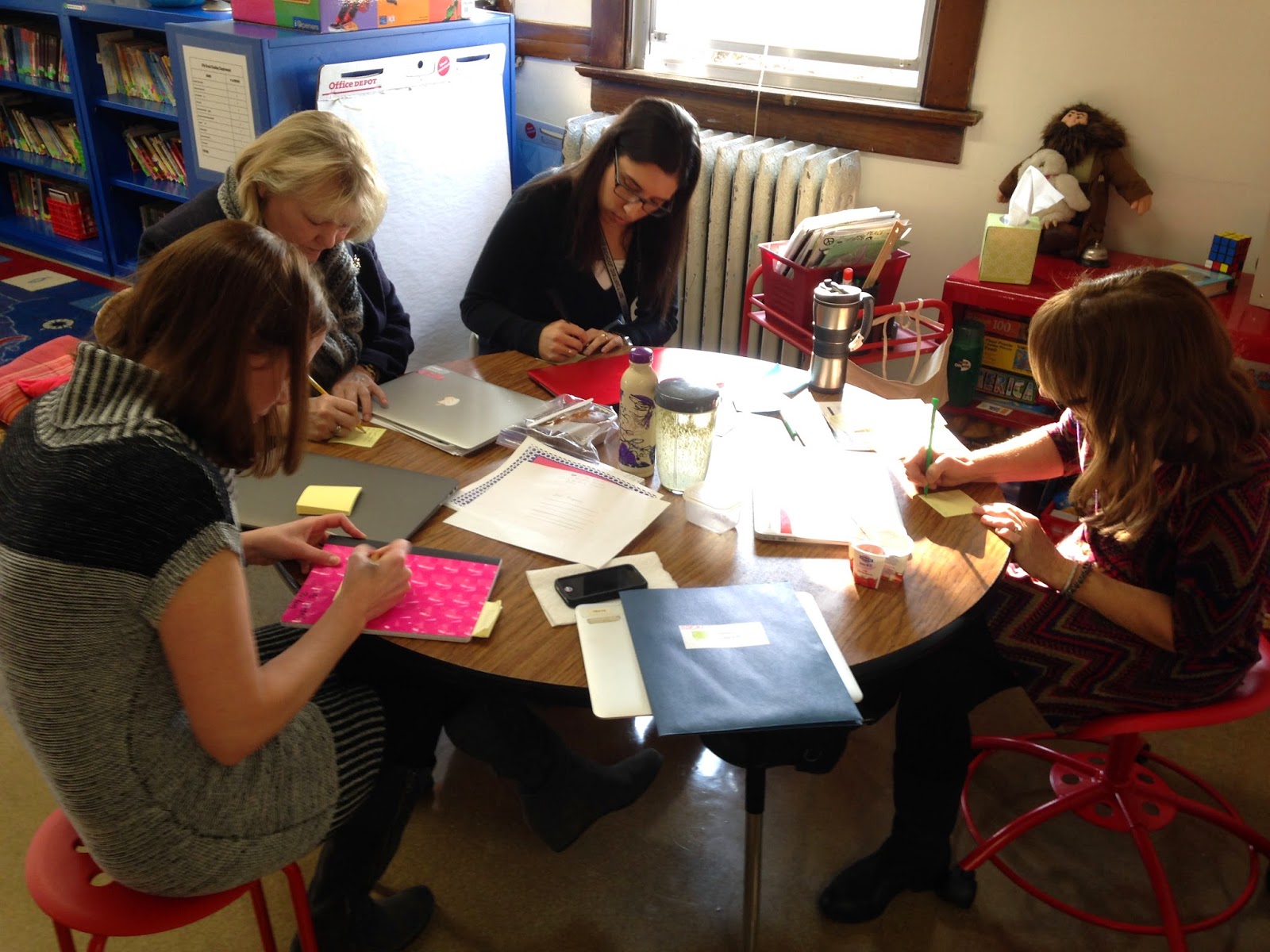This blog post is dedicated to the great kindergarten team at Hiawatha and our AP, with a little shout out to the 5th Grade, too: +Liliane Gelacio +Kara Wesolowski +Melissa Alper +Kirstin McGinnis +Bill Davini +Jane DeCaire +Jean O'Neil +Andrea Avila +Katie Cardelli
We expect a lot from our students these days. We expect them to learn things at a faster pace, both at school and at home. We support that learning through the great instruction that happens in our classrooms every single day. But, we cannot control the life experiences that our students have coming to school. Things like their exposure to nursery rhymes, reading with their family, tasting certain foods, experiences like baking, going places outside of the school walls, etc. Those are the things that we tend to talk about, or perhaps show a picture of, but we really can't give those experiences to our students.
Or, can we?!?!?!?
I was talking with a 2nd grade teacher this week about moving the small moments unit further into the year, simply because they don't have shared experiences yet to write about. She was saying that perhaps they needed to front load their field trips so that they have common experiences to pull from. She could be right about that. Kids need to have things to write about. They also need to understand what they are reading. Unfortunately, some of them don't. That's why our kindergarten staged a Goldilocks scene in their rooms earlier this year, and why our 5th graders had a Haunted Hiawatha on our stage (Videos below). And, this week, the Gingerbread Man was loose at Hiawatha.
It started with a lot of Gingerbread Man read alouds, with the last one being The Gingerbread Man Loose at the School. They had gotten all their classes together, put the ingredients together for a real "giant" gingerbread man cookie with the students, and sent him off to the oven. While he was cooking, they started to read the book below.
In the middle of the story, they were surprised when a giant gingerbread man appeared in their room. Banging on windows, busting through the door, and challenging them to chase him. So, they did!
They chased him right into the school, where they found pieces of him leading to the office. They burst into Mr. Davini's office, looking for the runaway cookie.
Instead, they found a confused Mr. Davini, who had just taken their cookie out of the oven. (Or, did he?!?!?!) They went back to class and tasted a real gingerbread cookie, and many of them had never had gingerbread cookies before.
Our kindergartners did not just read holiday books this Christmas season. They BECAME the characters in that book. They got to chase a "real" gingerbread man. The words, "Run, run as fast as you can. You can't catch me, I'm the Gingerbread Man!" became more than just words on a page. They got to be part of a shared experience that they will remember long after their kindergarten year.
Teachers often feel like they don't have time to do things like this. They often feel the pressure of the curriculum, and they feel the need to fill every moment of time with learning. Well, my question is, how can learning be better than experiences like this? As the videographer, I can tell you that this whole experience lasted no more than 30 minutes. In 30 minutes, they heard a story, became characters in the story, and sampled the cookie for real. THAT is the curriculum. Nothing about that experience was random. It was well planned out and supported those students in so many ways.
As we get closer to 2015, think about how you can support your students in the coming year. Can you teach the curriculum and all the important lessons and concepts that we need to teach, but throw in some creativity and EXPERIENCES for the kids? Can you make learning come to life for your students? Can you use their time wisely and accelerate their learning through the gift of life experiences?
Here is the link to the whole gingerbread experience (4 minutes):
https://www.youtube.com/watch?v=XnQUgWuBBSA&list=UUk1RxnbulhRNdiyLEn26S_w
Here is the gingerbread trailer version (1 minute):
https://drive.google.com/file/d/0B6nSB6nXSloXUWxKQl85LXZfRzQ/view?usp=sharing
Here is the Goldilocks scene video:
https://drive.google.com/file/d/0B6nSB6nXSloXemY5OTBXM3hpRXM/view?usp=sharing
This was the beginning of their fairy tale unit.
Here is the 5th Grade Haunted Hiawatha:
https://drive.google.com/file/d/0B6nSB6nXSloXTU9PZjFmVGdRdFE/view?usp=sharing
They then used this experience as a boot camp to write small moment stories.





































